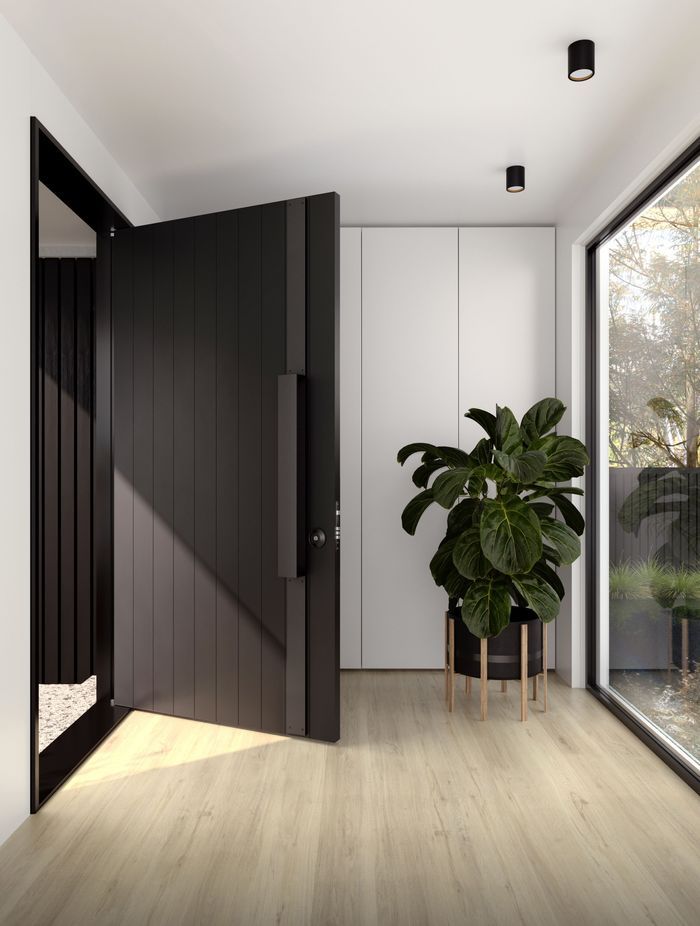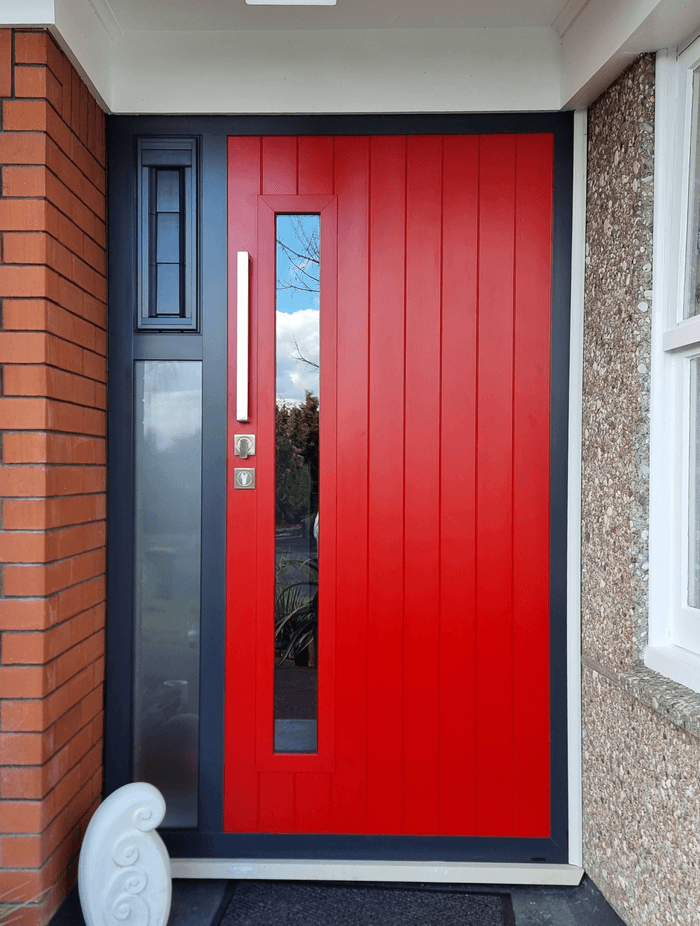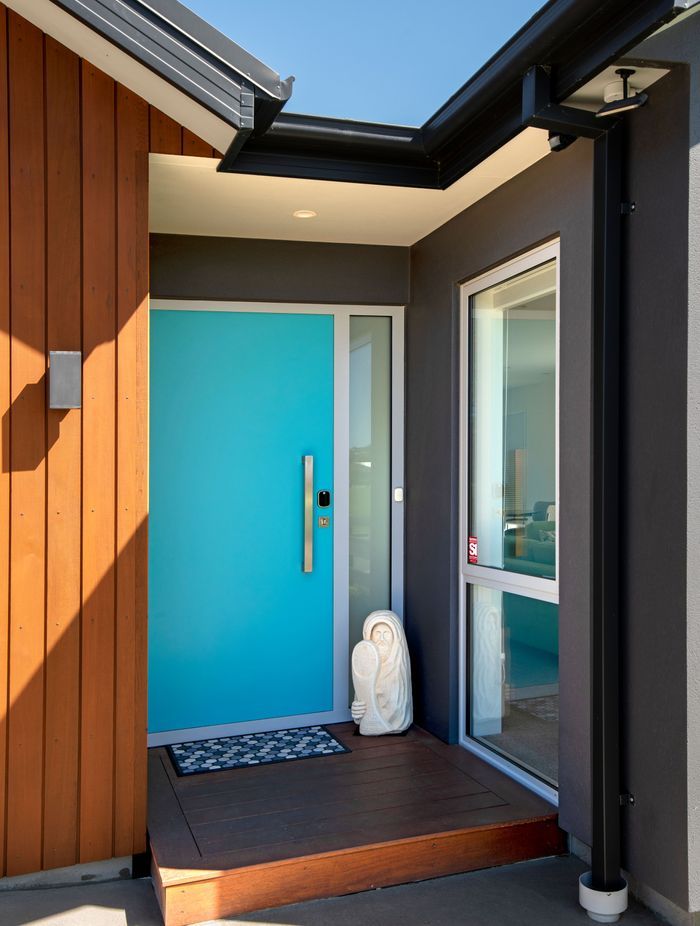Durability and style: a closer look at composite and aluminium doors
Written by
14 July 2024
•
4 min read

When it comes to choosing doors that combine durability and style, composite and aluminium options stand out. Composite doors achieve their exceptional durability through their glass-reinforced, hard-wearing faces bonded to composite PVC edges, making them fully weather and moisture-resistant. Unlike traditional timber doors that rely on paint for protection, composite doors offer a maintenance-free solution. On the other hand, aluminium doors are ideal for modern architectural designs, featuring large, flat, smooth surfaces with premium powder coat finishes. These doors can also feature contemporary designs and patterns, enhancing their sleek, stylish appeal.
To better understand the differences and benefits, we spoke to Parkwood Doors’ Carver Broomhall, who explains the key features of each.
The differences between composite doors and aluminium doors
Renowned for their solid feel and excellent weatherproofing properties, composite doors are an ideal choice for preventing heat loss.
“Composite doors are fully weather and moisture-resistant due to their glass-reinforced hard-wearing faces bonded to the composite PVC on all edges of the door (instead of timber faces or tempered hardboard skins and timber framing around the edge, which relies on paint to seal and protect it),” shares Broomhall.
Composite doors also offer exceptional benefits in terms of insulation and energy efficiency. They provide insulation that is twice as effective as the best-insulated aluminium doors and at least 30% higher than solid timber doors. This makes composite doors an excellent choice for homeowners looking to maximise energy efficiency, particularly in colder regions.
However, when it comes to achieving luxurious designs and accommodating larger sizes, aluminium doors take the lead. Aluminium doors boast a premium powder coat finish that seamlessly complements your window suite, offering a cohesive and stylish look.
“Aluminium doors feature large flat smooth surfaces with the premium powder coat finish, optionally with modern groove designs and patterns, lending itself to that contemporary style,” says Broomhall. “Architectural designs often use dark colours, which are warrantied/guaranteed.”


While composite doors feature a standard paint finish that can still be very attractive, the sophistication and variety of the powder coat finishes available with aluminium doors provide a distinct advantage.
Parkwood Doors’ aluminium doors boast several innovative features that set them apart, with one standout being the patented Thermtek sliding connectors. This unique technology, found nowhere else in the world, allows for dark-coloured thermal metal doors that maintain their structural integrity regardless of temperature fluctuations. Thanks to the Thermtek sliding connectors, the doors won’t bow or twist, ensuring long-lasting durability and performance even in the harshest conditions.
Aluminium doors also excel in durability, especially in various weather conditions. The powder coating available only on aluminium doors is the best exterior finish for exposed entryways and dark finishes, ensuring long-lasting performance compared to standard paint finishes, and is particularly beneficial for dark-hued finishes.
“Aluminium doors are the ultimate door for dark colours in all-day sun. For colder areas, composite doors are best as they have better insulation.”

Main considerations when choosing between composite and aluminium doors
When choosing between composite and aluminium doors, several key considerations come into play. Budget is often a primary factor, with composite doors typically being about 20% cheaper than aluminium options. Thermal insulation is another important aspect; composite doors offer superior insulation, making them ideal for colder climates. The size and design/style of the door are also crucial, as aluminium doors can accommodate larger sizes and offer sleek, modern designs with premium finishes. While composite doors provide excellent insulation and affordability, aluminium doors excel in durability and aesthetic appeal, performing much better in dark colours in full sun, as opposed to composite doors which can show a slight 'wave' or 'picture-framing' on the door when painted dark glossy colours Each option has its unique advantages, making the decision dependent on the specific needs and preferences of the homeowner.
Maintenance is another consideration, says Broomhall.
“There is no maintenance for aluminium (apart from wash downs etc specified by powder coat manufacturers) but Duramax (composite) doors will need repainting like any other paint finish.”


Future trends in door design
Exciting advancements are on the horizon for both aluminium and composite doors. Parkwood Doors is set to release their third-generation Thermtek FL aluminium door, which features enhanced material and construction, while still utilising their innovative sliding connector technology. This upgrade will further improve the thermal R-ratings, making their aluminium doors even more energy-efficient.
On the composite side, Parkwood Doors is introducing a special improvement to the inside construction of the door. This enhancement will significantly boost the door's stability and allow for additional features, making their composite doors an even more attractive option.
Explore aluminium and composite doors from Parkwood Doors